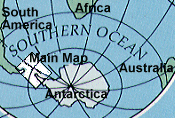
![]()
.
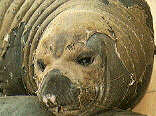
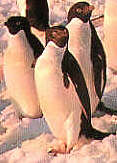
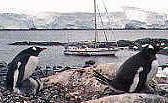
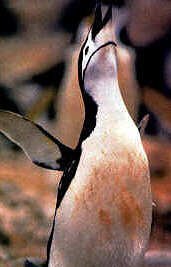
![]()

[
Logbook Index ]

Log
Entry for 16 January 1997
Position remains: 62-14 S 58-41 W
Click
chart for details
Anchored Potters Cove, near Jubany Base,
King George Island.
Waiting a weather window to tow 'Tom Crean'
to Elephant Island
|
King George Island has one of the highest concentrations of bases of the whole Antarctic continent. Most of the stations have official scientific objectives and chats with the biology researchers stationed at Jubany Base are of great interest. The biology section is run by the German Alfred Wegener Institute for polar and marine research. One branch deals with microbiology and invertebrate creatures and how they act at a trophic level. In other words, how energy is absorbed and released by the animals, invisible to us, which inhabit the waters of Potters Cove. The influence of this process on the environment also interests Jensko Walke, the young German marine ecologist in charge of the project. He recognizes the study is limited because it only covers Potters Cove and stops during the Antarctic winter. While getting ready to jump in the dinghy for his daily dive in the icy waters of the cove, he makes the point that the papers written on the subject are based on studies done 20 years ago. His recent discoveries contrast greatly with past results and in spite of the limitations will add useful new knowledge. Of more interest to us non scientific visitors is the wildlife which is the responsibility of second branch of the laboratory. The coast of King George is a breeding ground for elephant seals. They are the only mammals that breed on the island, although Weddel and Crabeater seals visit the area. A big German called Sven is doing his Phd on the seals milk content. He walks about 20 km a day to carryout his research work. He took us to see the huge animals lying lazily on the beaches. It is their moulting season so they have an outer dark grey layer of old skin peeling away as the new light brown fluffy fur emerges. The pups of the elephant seals weigh 50 kg at birth in October. The ones we see now are therefore between 2 and 3 months old but they are quite big! After birth they milk for exactly 22 days and grow to the weight of about 200 kg. They then fast for 30 days in order for the maternal milk, which is very fat, to be transformed into muscular tissue. At that point they become independent and need to go to sea to feed themselves. To catch their prey they dive 1000 meters deep. Their diet is composed mainly of molluscs, octopuses and small fish. The sea elephant's metabolism will transform all this into fat. Only 50% of the pups reach the breeding age of 10. The males, which by then weigh 3- 4000 kg, develop their elephant like nose and form a harem. Each male can have 40 wives and must fight off his rivals to maintain them! On King George Island there are also 3 species of penguins. Diego Montalti is the Argentine scientist who specializes in recording observations on penguin life. He tells us the 3 species are similar but there are fundamental differences in their looks and lifestyles. The Adelie penguin is the most common. It has a blackhead and is the first one to arrive here in summer, at the beginning of September. It makes it's nest immediately and reproduces. About 20 days later the Gentoo penguin-or Papua-penguins reach the area. These birds are easily recognizable because of their red-orange beak. The Gentoos sometime winter in the area. The third species to reach the South Shetland islands from the north are the Chinstrap, so named because they have a black strap under their chin as if they were wearing a helmet. Penguins live 20-30 years. The males arrive at the breeding ground first and return to the nest they used the previous year. There is fierce competition for the best shaped rocks on which to make their homes. Penguins are monogamous and when the females arrive they recognize each other by their voices. The females scream and flap their wings violently until their companion finds them. Two eggs are laid and at least one chick per couple survives. Diego tells us that the most common bird on the island is the Skua. It is a scavenger and many have been circling around the 'cordero'(side of lamb) that hangs on the stern of Pelagic curing in the wind. The skuas try to steal penguin eggs, eat penguin chicks, and dead sea elephants. They are also cannibals since they go for skua eggs and chicks. The other birds that fly to these South Shetland seas are the Giant Petrel, the Wilson Storm Petrel, the Kelp Gull and the Antarctic Tern. Here in the Antarctic all these animals have no fear of man. We can approach the seals or the penguins as if they were in a zoo - but without the cages!
Elena Caputo |
[ Next Log Entry | Previous Log Entry ]
